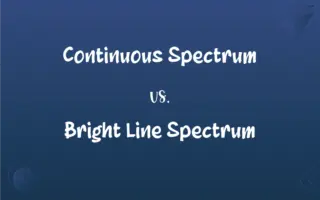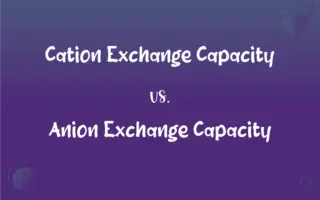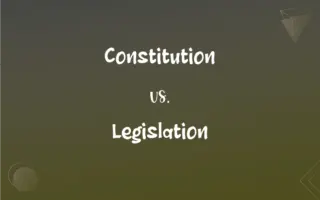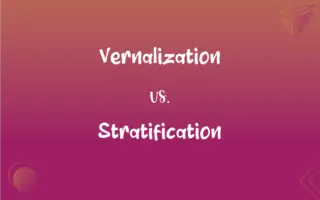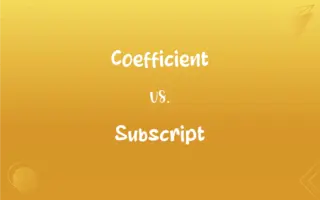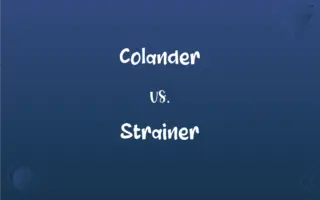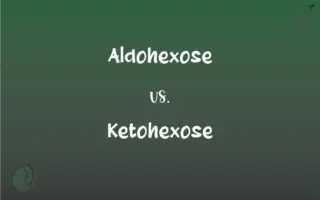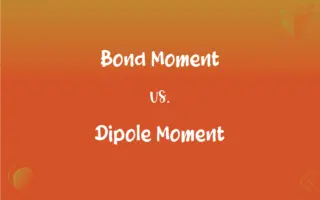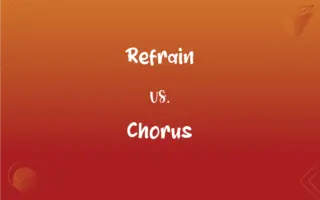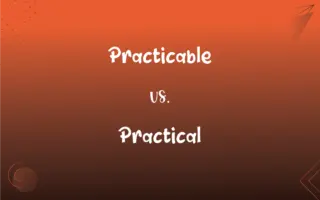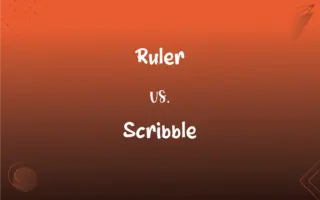Bill of Exchange vs. Promissory Note: What's the Difference?
Edited by Aimie Carlson || By Harlon Moss || Published on November 27, 2023
A bill of exchange involves three parties and is an order to pay, while a promissory note is a two-party instrument where one party promises to pay another.

Key Differences
A bill of exchange involves three parties: the drawer, the drawee, and the payee. The drawer orders the drawee to pay a third party (the payee). While, a promissory note involves just two parties: the maker (who promises to pay) and the payee.
A bill of exchange is an order made by one person to another to pay money to a third person. Conversely, promissory note is a promise made by one person to another to pay a certain sum of money.
In a bill of exchange, the liability is conditional and the drawee is not liable until they accept the bill. On the other hand, in a promissory note, the maker is immediately liable to pay the amount.
A bill of exchange requires acceptance by the drawee or someone on their behalf to become a binding obligation. Whereas, a promissory note does not require any acceptance as it is a promise rather than an order.
Bills of exchange are commonly used in international trade for buying and selling goods. Promissory notes are often used in financing, such as loans or credit transactions.
ADVERTISEMENT
Comparison Chart
Parties Involved
Three (Drawer, Drawee, Payee)
Two (Maker, Payee)
Nature
Order to pay
Promise to pay
Liability
Conditional, upon acceptance
Immediate, on issue
Acceptance Required
Yes, by the drawee
No
Common Use
International trade
Financing, loans
ADVERTISEMENT
Bill of Exchange and Promissory Note Definitions
Bill of Exchange
A trade document in international commerce for buying and selling goods.
The bill of exchange facilitated the overseas trade deal.
Promissory Note
A written promise to pay a specified amount of money on demand or at a future date.
She signed a promissory note for her car loan.
Bill of Exchange
A written order from one person to another to pay a specific sum to a third person.
The exporter issued a bill of exchange to the importer for the payment of goods.
Promissory Note
A simple written promise to pay a certain sum of money to a specified person.
The company issued a promissory note to its investor as a commitment to repay the funds.
Bill of Exchange
A negotiable instrument involving three parties in a payment order.
The company used a bill of exchange for its international transaction.
Promissory Note
A negotiable instrument containing an unconditional promise of payment.
The promissory note was legally binding and required payment on the specified date.
Bill of Exchange
A financial document ordering the payment of a specified amount of money.
The bill of exchange was presented for payment on the due date.
Promissory Note
A financial instrument in which one party promises to pay another a definite sum.
The borrower issued a promissory note to the lender agreeing to repay the loan.
Bill of Exchange
An order by the drawer to the drawee to pay money to the payee.
He signed a bill of exchange directing the bank to pay the supplier.
Promissory Note
An instrument for financial transactions as a form of debt acknowledgment.
To secure the credit, he provided a promissory note to the creditor.
FAQs
What is the purpose of a promissory note?
To provide a written promise to pay a certain sum of money.
What is a bill of exchange?
It's a written order to pay a specific sum, involving three parties.
How does a promissory note differ from a bill of exchange?
A promissory note is a two-party instrument with a promise to pay, while a bill of exchange orders a third party to pay.
Who are the parties in a bill of exchange?
Drawer, drawee, and payee.
What happens if the drawee refuses to accept a bill of exchange?
The bill cannot be enforced against the drawee.
Can a promissory note be used for personal loans?
Yes, it's often used in personal and commercial loans.
What is the liability of the drawer in a bill of exchange?
The drawer is secondarily liable if the drawee defaults.
Can a promissory note be transferred to another party?
Yes, if it's a negotiable instrument.
Who bears the risk in a bill of exchange?
The drawer and endorsers bear the risk until the drawee accepts.
Is a bill of exchange used in international trade?
Yes, it's commonly used for international transactions.
Does a promissory note require acceptance?
No, it's a promise and does not require acceptance.
Are bills of exchange legally binding?
Yes, once accepted, they are legally binding.
Can a bill of exchange be unconditional?
Yes, it's typically an unconditional order.
How is a promissory note settled?
By paying the specified amount to the payee.
Is a promissory note negotiable?
Yes, if it meets certain criteria, it's negotiable.
Is interest mentioned in a promissory note?
It can be, depending on the terms of the agreement.
What role does a drawee play in a bill of exchange?
The drawee is the party ordered to pay the amount.
How are disputes in a bill of exchange resolved?
Through legal channels, as it's a binding document.
What makes a promissory note valid?
A clear promise to pay, amount, and the payee's name make it valid.
What happens if a promissory note is not paid?
The payee can take legal action to enforce payment.
About Author
Written by
Harlon MossHarlon is a seasoned quality moderator and accomplished content writer for Difference Wiki. An alumnus of the prestigious University of California, he earned his degree in Computer Science. Leveraging his academic background, Harlon brings a meticulous and informed perspective to his work, ensuring content accuracy and excellence.
Edited by
Aimie CarlsonAimie Carlson, holding a master's degree in English literature, is a fervent English language enthusiast. She lends her writing talents to Difference Wiki, a prominent website that specializes in comparisons, offering readers insightful analyses that both captivate and inform.


